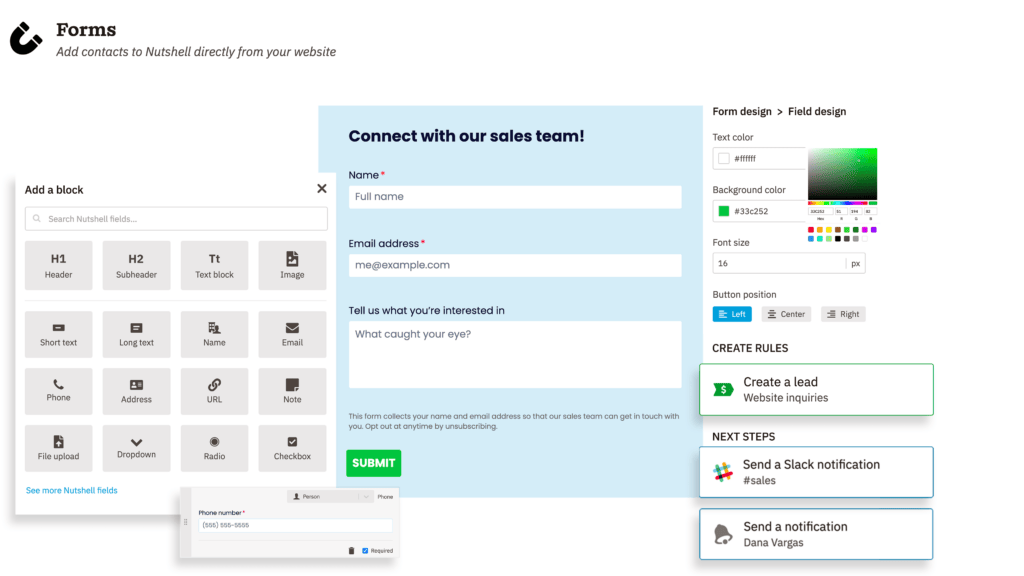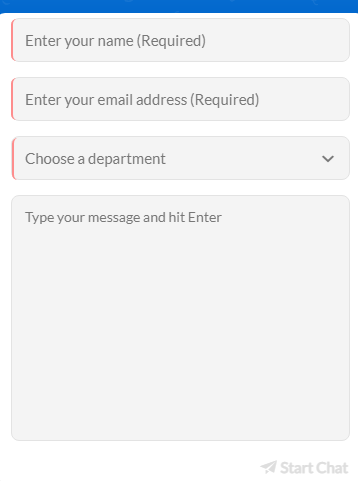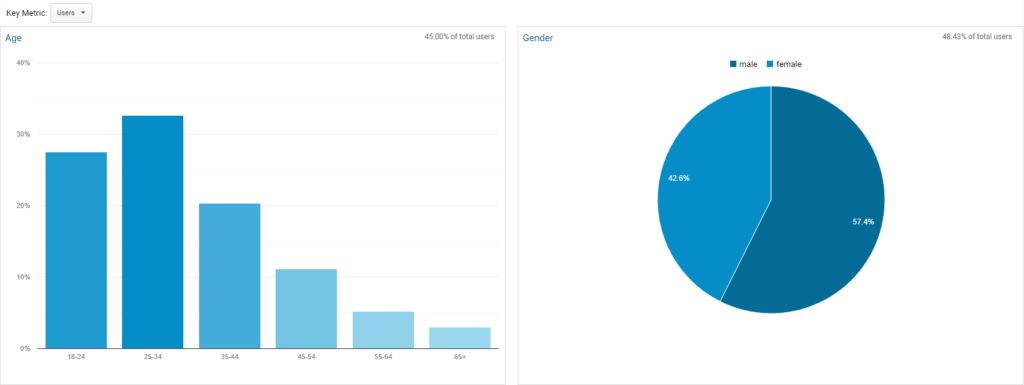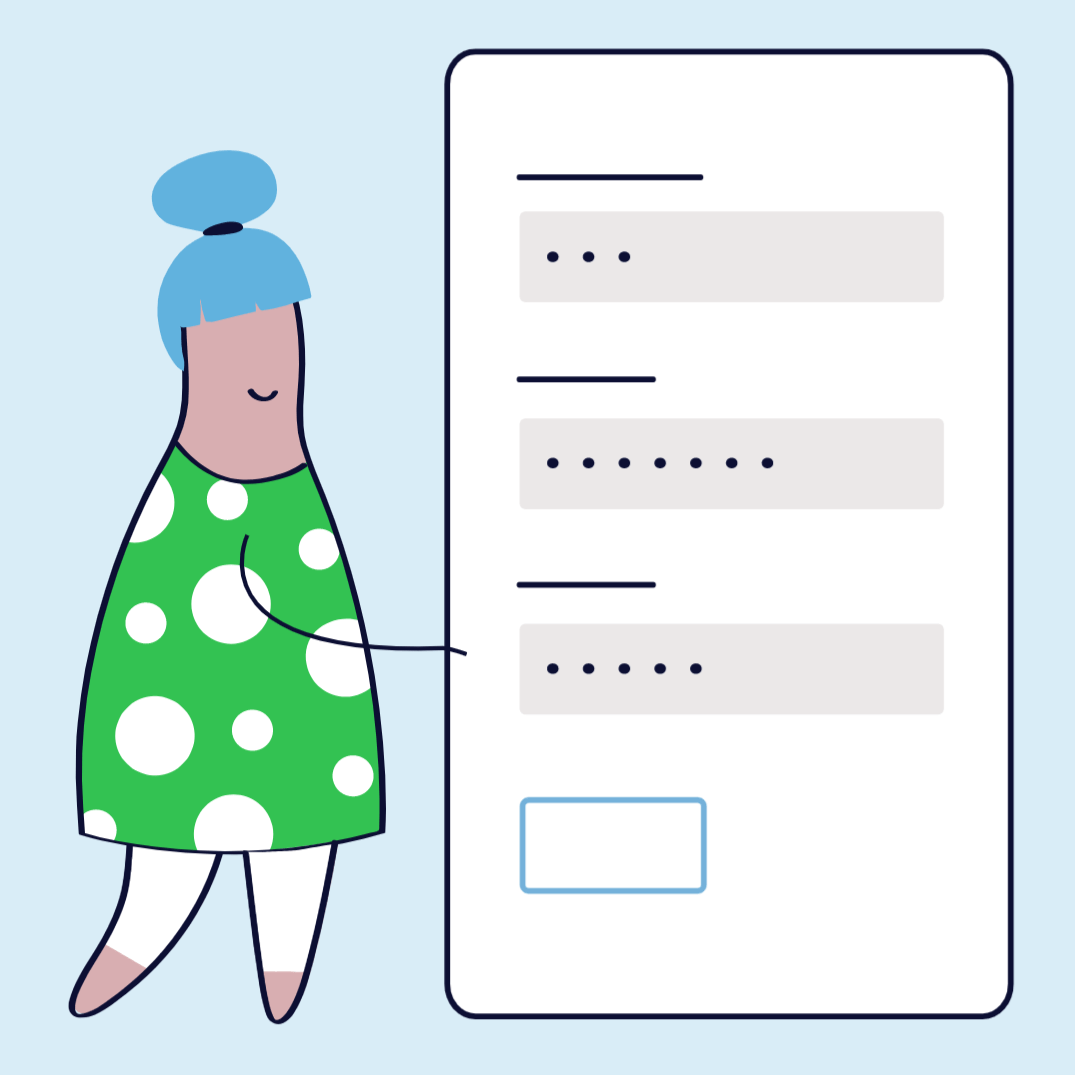Need more Leads?
Invest in professional marketing services from WebFX and kick your company’s growth into high gear.

First-party customer data drives better outcomes: Collecting and using your own customer data (like behavior, feedback, and demographics) leads to more personalized marketing, stronger sales forecasting, and higher customer retention—without relying on third-party sources.
Purposeful data collection is essential: Before gathering any data, define your goals (e.g., increasing conversion rates or reducing churn), choose the right tools (like CRMs and analytics), and ensure compliance with data privacy laws.
Use multiple methods to build a complete picture: Combine strategies like online forms, email signups, transaction data, and CRM tracking to capture actionable insights across the customer journey.
First-party customer data collection is critical in a world where third-party cookies and data are quickly disappearing. You’ve identified the customer data you want to collect, and now it’s time to actually go out and get it. But how?
Identifying the best ways to collect customer data can be challenging, but ultimately, the juice is worth the squeeze, and the process can lead to better business growth. So, if you’re wondering how to collect customer data and create a database for your sales and marketing strategies, you’ve come to the right place.
On this page, we’re going over the best customer data collection methods so you can gather valuable information from your audience to inform your strategies.
Just keep reading to get started!
💬 ChatGPT
🔍 Perplexity
🤖 Claude
🔮 Google AI Mode
🐦 Grok
With Nutshell Forms, you can leverage customizable web forms to automatically gather customer details and send them straight to your CRM, saving you time and hassle.

Customer data collection, also known as customer data harvesting, refers to gathering information about your customers, including their identity, preferences, behaviours, and interactions with your company and brand.
It’s important to note that when we talk about customer data collection or harvesting, we’re referring to intentional information collection where the customer has permission to record and store the requested data.
When collecting data, teams typically focus on four core data types, which are:
Why do we collect these types of data from customers? Collecting and understanding customer data allows your business to build unified, accurate customer profiles that help sales and marketing teams personalize outreach, forecast demand, and improve offerings.
Capturing accurate, first-party customer insights at every touchpoint is paramount to gaining a clearer view of who your buyers are, their needs, and the best way to engage them. The payoffs of this are immense and can benefit every aspect of your business, including:
With accurate data, customer segmentation and message personalization are more achievable. Targeting more refined audiences allows you to form deeper connections with more relevant messaging, boosting open and conversion rates.
Applying effective analytics and reporting techniques to better understand your customer data lets you spot trends and patterns early. This helps businesses with more accurate revenue forecasts and enables sales managers to course-correct before team quotas slip.
Understanding your customers’ behavior and preferences gives you the tools you need to tailor engagement touchpoints for custom experiences. When customers feel heard and understood in this way, the business benefit is often a reduction in customer churn and an increase in upsell opportunities.
When you know exactly how your customers found you and how they engage with your business and products, you can better pinpoint your most profitable channels, campaigns, and product features. With this knowledge, you can retire sales and marketing avenues that aren’t working and reduce wasted time and money on these unsuccessful efforts.
You’ve designed your products and services for specific use-cases, but your customers may use them in ways you never imagined. This real-world usage data can spark new product ideas, help you optimize pricing structures, and support improvements your target audience will appreciate.
If you’re transparent about how you’re managing your customer data and adhering to all the necessary collection and privacy regulations, it’ll put you in good standing with both the regulatory authorities and your customers. Compliance and sound data harvesting practices help you avoid fines and related complications, and they help your business earn more customer trust, increasing brand loyalty and advocacy.
Quality customer data collection is one of the most effective ways to improve sales performance.
Quality customer data enables you to:
But before you start implementing customer data collection methods, there are a few things your business should consider:
You probably already know your company’s reason for collecting customer data. You may want to know more about the people who buy your products to optimize your marketing campaigns or understand your customers’ needs to boost your sales efforts.
Outlining your business’s goal for harvesting data will help you determine which customer data collection methods to use, how much to collect, and what to do with the information once you have it.
Before you can start collecting data, you need to know what data you want to collect from customers. The answer to this question depends on your data collection and sales goals.
What are the most important objectives for your sales team? Which targets would make a truly meaningful impact on your organization when you hit them?
Once you know what your most important goals are, consider:
Your team could collect many types of data from customers, such as statistical information and qualitative data, like preferences and motivations.
For example, if your goal is to increase average deal size, you need to know which types of customers spend the most with your company. You could use demographic, firmographic, behavioral, and other data types to determine this. You might find, for instance, that B2B companies that visit a specific page on your website spend more than other customers.
Then, you can determine which metrics you need to track your progress. In our example, you’d need data about closed deal sizes and the number of won deals to calculate your average deal size. You may also need historical data on average deal size.
If you need to know what type of business tends to buy your products, gathering data like company size and industry will be helpful. Understanding your customers’ pain points will also help you determine what factors influence their purchases.
Another essential step is choosing the sources from which you’ll pull your data. You’ll need to select a variety of reliable sources so that you have a full picture of your sales performance and the interactions between sales and other departments.
Gathering data about sales performance, the characteristics of leads and customers, and data from other departments, such as marketing and customer support, is helpful for sales teams.
The tools you use for collecting data play a vital role in how successful you are in creating a data-driven sales team.
When deciding what tools to use, look for user-friendly options with the features you need and make it easy to collect, manage, analyze, and leverage your data. Consider your goals when selecting tools, and choose the tools that will best help you get there.
For sales data, your most important tool is your CRM. Your CRM will help you to:
The exact features you get will vary depending on the CRM you choose. Some of the features in Nutshell include simple contact management, embeddable forms that send data right to your CRM, and automatic lead attribution.

Check out the full guide!
Considering how your company will store the data once it’s collected is critical. Your data storage solution will determine how long you can access the data after you collect it and how well it’s protected from leaks or misuse.
A customer relationship management (CRM) platform is a popular customer data storage solution. A CRM platform enables you to collect and store tons of customer data so you can use it to strengthen customer relationships and drive more sales.
To create a customer data collection strategy, you’ll need to set up processes and policies for managing your data.
Setting up internal standards for how your team manages data is referred to as data governance.
Data management standards typically include measures for ensuring data quality and accuracy, such as:
Data governance also includes policies to ensure data security and privacy, including compliance with relevant regulations.
Businesses must ensure they remain compliant with all relevant data harvesting and protection laws. Research federal, state, and local laws and make sure you know which ones apply to you. If you have questions about which rules you need to follow, consult your legal counsel.
One of the best ways to ensure your compliance is to provide customers with a direct request for permission to gather personal information and a clear outline of the data you collect and how you plan to use it.
You must also ensure the security of customer data by implementing comprehensive data protection measures. These measures will help safeguard the customer’s personal information against unauthorized access.
Take a look around our powerful, easy-to-use CRM with a live demo!

Now that you’ve thought through the “why” of collecting customer data, it’s time to plan the “how.” Here are 14 of the best ways to collect customer data and build your database:
Collecting and listening to feedback is a great way to learn more about your prospects and current customers. Whether you ask for it or not, customers will be happy to relay feedback about their experience with your business to you.
Having a data harvesting process in place for customer feedback is critical to acquiring and acting on that feedback. Customer feedback can be collected through verbal interactions, over the phone, through email, or through online forms and surveys.
You can ask your audience to share their feedback and experience after:
Be sure to include questions that enable you to learn more about your customers and prospects. For example, you can ask questions about their age or location.
You could also ask customers why they decided to purchase your product or service to understand their pain points and motivations better.
Customer feedback is raw, unfiltered feedback about your brand, products, and services, and it can help you improve customer experience. It can also sometimes be biased, and since it’s coming straight from the customer, certain things may be slightly over- or underexaggerated.
With online forms, you can capture the information you need and hear directly from your customers with ease. Nutshell’s form builder can help you easily create online forms.
You can customize your online forms to reflect your brand perfectly and include numerous question types to ensure you collect the exact information you’re looking for. Nutshell Forms also sends data directly to your CRM.
Online forms require less manual effort from sales teams than customer interviews and much less planning when implemented. However, improper goal setting can lead to creating online forms that don’t directly address all the information you want to collect from your leads. So, make sure clear objectives are in place beforehand.

Another great way to gather customer data is to create an email newsletter. When customers sign up for your newsletter, they’ll usually need to provide their email address and name at a minimum.

Then, you can use your email newsletter to collect further information from your customers.
For example, you can ask them what types of content they would like to see and which products or services they are most interested in. You can even use your newsletter to send your audience one of your surveys using the tip we mentioned above.
Do you have a company blog? If not, it might be time to start one. Besides aiding your search engine optimization (SEO) strategy and lead nurturing tactics, your blog posts can also help you collect valuable information from your customers and prospects.
Consider allowing customers and other website visitors the option to subscribe to your blog to get notified when you publish a new post. You can include a blog subscription form on some of your web pages and blog posts.
At the minimum, ask your audience to provide their name and email address so they can sign up for your blog. Additionally, you can ask subscribers about what blog topics they would enjoy most to better understand your audience’s interests so that you can create more relevant blog posts in the future.
Invest in professional marketing services from WebFX and kick your company’s growth into high gear.

Collecting user data is a breeze when you use chatbots throughout your website. Powered by artificial intelligence (AI), chatbots can interact with your customers to answer their questions and provide them with solutions.

Using chatbots, you can learn about your customers’ pain points, which products or services they are most interested in, and what information they’re searching for on your website.
Your chatbot can also gather even more data from your customers by asking them to fill out a survey about their experience using the chatbot. You can ask your customers questions about their demographics, interests, and experience using the chatbot in your survey.
One of the best ways to collect customer data is to analyze current customers and their order histories. When customers purchase a product or service, they usually need to provide some of their information, like their name, email address, and physical address.
Looking at your order and purchase history can reveal similarities between your current customers. For example, you might notice that most of your customers are located in the same city.
You can also use your customer purchase history to see which products or services result in the most sales for your business. Buying and browsing behavior, as well as overall customer loyalty, are also metrics to look out for.
Transactional data gives you insight into the buying behaviors of specific customers, allowing you to create a more detailed customer profile. However, the data points harvested are limited to particular customers, products, and services, so the data requires additional analysis after being collected to glean more significant insights.
Take our guided tour to explore Nutshell’s incredible features!

Utilizing social media is another great method for collecting customer data. Many social media platforms give you valuable insights into your audience.
For example, social media sites like Facebook and Instagram are equipped with features for audience insights. You can view which time of day your audience is most active, audience demographics like location and age, audience interests, and much more.

So, if you don’t already have a social media profile, now could be the perfect time to create one so you can start gathering valuable information from your audience.
There’s a plethora of website analytics tools that enable you to track data from your website visitors and current customers.
For example, Google Analytics 4 (GA4) lets you gather tons of data about your audience and current customers.

With Google Analytics, you can track the following:
Google Analytics is a great way to gather in-depth information about your current customers and gain insights into the success of your sales and marketing strategies.
When you’re hiring for a new position, the best way to get to know your candidates is to interview them. Just like the hiring process, one of the best ways to harvest customer data is through interviews.
Interviews can be conducted with current and past customers to gain insight into their thoughts on your brand and their wants, needs, behaviors, and preferences.
Interviews allow for face-to-face, personal interactions, and interviewers can pick up on nonverbal cues from interviewees. However, they can cost more than online surveys and forms and require more planning. Answers can sometimes be biased, especially if questions are leading.
Often, the most overlooked form of data harvesting is utilizing public records. They’re public for a reason. Why not make use of them?
Public records hold valuable information related to demographics, income, and other important information about service areas and business footprints. With the help of the other data you’ve collected, you can use public records to make educated inferences about how to support your business’s growth.
Public records give businesses valuable insight into customers within specific geographic regions. That said, the data offered in public records can be limited regarding geographic location, context, and data type.

You can use heatmap software to monitor website visitor page interactions, such as clicking and scrolling. This way, you can see which parts of your web pages receive the most and least visitor engagement.
Gathering this behavioral data through heatmaps lets you know which parts of your website are most attractive to visitors. With this data, your organization can optimize and test page content, layouts, and CTA placements to improve the user experience and encourage more conversions.
A social listening tool allows you to monitor conversations about specific topics across social media sites. One way to use it is to track brand mentions and establish how your audience feels about and interacts with your brand.
Data harvested with these tools lets your business to detect industry and buyer trends. This will enable you to adapt to changes swiftly and take advantage of new opportunities before your competition.
Social listening tool data can improve marketing strategies, enhance product development, and enrich customer experiences. Engaging with those discussing your brand is also an excellent way for businesses to manage and influence brand reputation.
A/B testing is another great way to gather data and feedback from prospects and customers. It allows you to test two versions of a web page, newsletter, landing page, and more, to determine which gets the most engagement and garners more conversions.
With A/B testing, you gain valuable insight into your audience’s content and design preferences, making it easier to create compelling content in the future. It also gives your team the power to create optimal user experiences and encourage more conversions.
Last on our list of customer data collection methods is using CRM software. We may sound a little partial, given that we’re a CRM company and all, but we truly believe a CRM is an invaluable resource for collecting customer data.
A CRM like Nutshell enables you to automatically collect and store audience information the second customers or prospects fill out forms on your website and contact your business. Nutshell can even automatically pull in lead attribution data. How’s that for easy customer data harvesting?
What’s more, Nutshell CRM offers sales pipeline management, data tracking, and reporting features, so you can view the details of your sales performance and begin working out a game plan to wow prospects and turn them into customers.
Common challenges associated with CRM software include being overly complicated, expensive, and having minimal customization options. Nutshell prides itself on offering a CRM solution that’s affordable, easy to navigate, and customizable where you need it most.
A CRM like Nutshell offers you several easy ways to collect customer data and use it to build brand loyalty, leading to more sales and revenue for your business.
With Nutshell Forms, you can gather customer data on your website and automatically create new contacts and leads.

So, we’ve weighed the pros and cons, but now it’s time to decide: Which data collection method is the best? Trick question: The “best” method of collecting customer data is subjective. Each business has its own unique sales goals, and to reach those goals, you need specific data to help you monitor your progress.
While transactional data may be the end-all and be-all for one business, that may not be the case for another, and that’s okay! Every business should choose and utilize customer data collection methods that suit their needs and help them reach their goals.
The considerations and customer data collection methods discussed above provide a good starting point for how to collect customer data and build your database. Have more questions? Take a look at these FAQs for some answers:
Gathering information about your customers brings several benefits, like the segmenting your audience for marketing campaigns and using customer feedback to improve your products.
The best method for collecting customer data depends on your company’s goals and resources. Customer purchase history might be a great source of information about where most of your customers are geographically located, but it won’t tell you which topics they like to read most on your blog. Your organization’s data collection processes should be tailored to its unique needs.
Gathering information about your customers is generally legal, but various laws and regulations govern how companies collect and use customer data. It’s important to follow all relevant data privacy regulations and best practices.
Here are a few mistakes to steer clear of when collecting customer data:
Ready to start collecting customer data? Make collecting user data a breeze with Nutshell.
Nutshell is a user-friendly CRM platform that enables you to automatically collect information from your leads and customers directly from your website, like their demographics, email addresses, interests, and more.
When it comes to efficient customer data collection, Nutshell’s got your back. Nutshell’s intuitive CRM collects, organizes, and stores customer data, building customer profiles that allow for convenient browsing at any time.
Learn more about the different ways in which Nutshell can help you collect customer data by starting a free trial of our all-in-one CRM system or attending a live product demo to get a closer look at what we’re all about.
Join 30,000+ other sales and marketing professionals. Subscribe to our Sell to Win newsletter!
